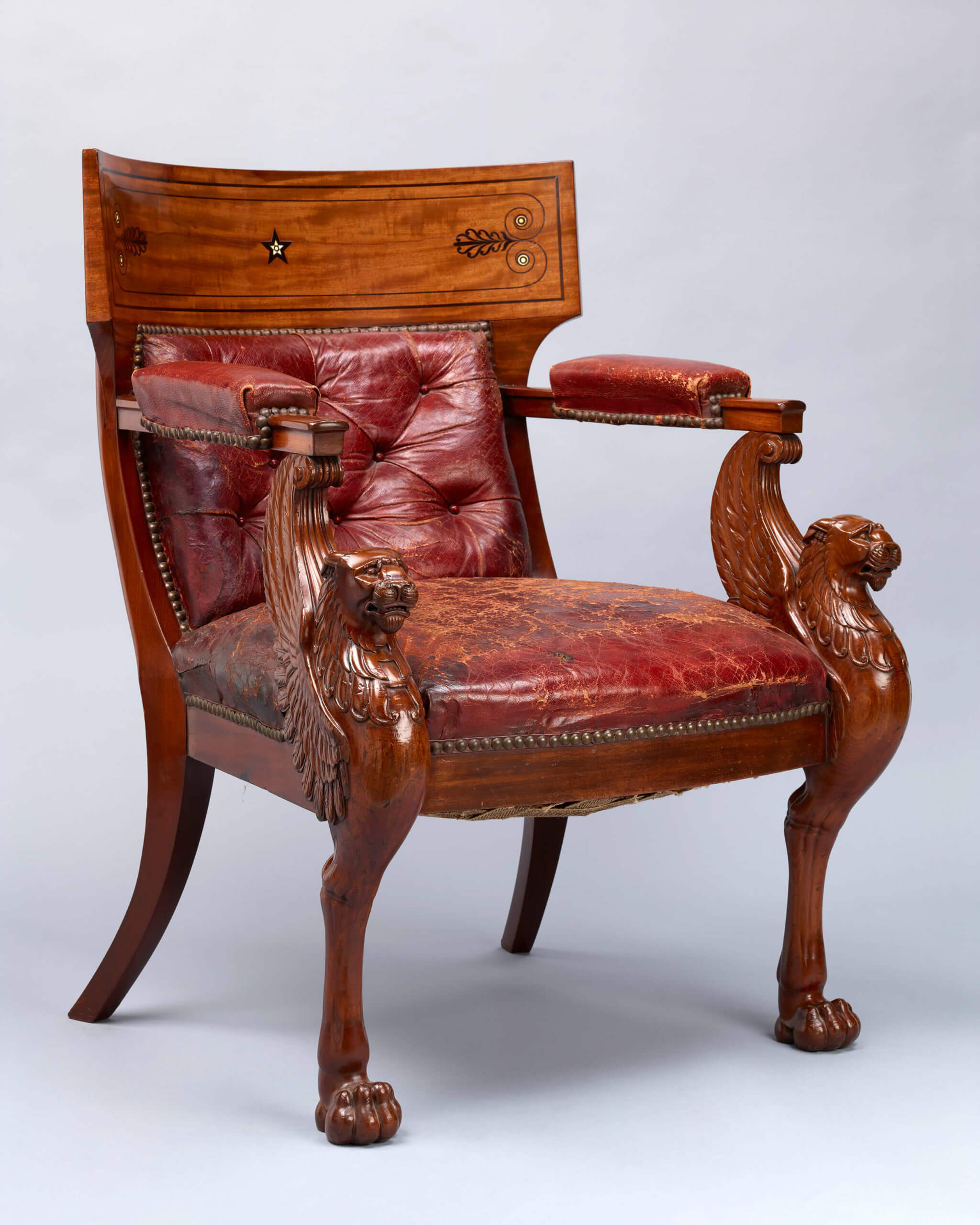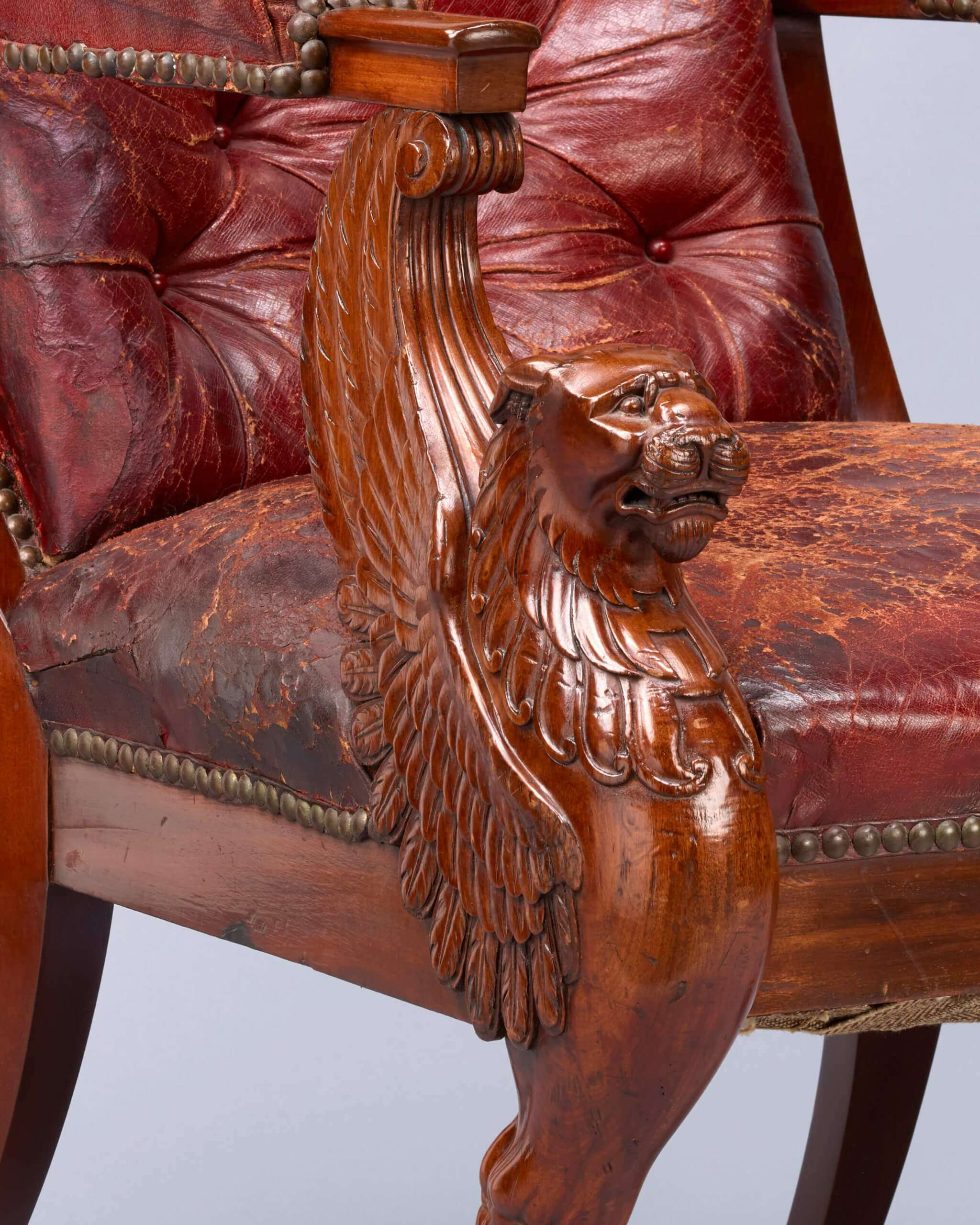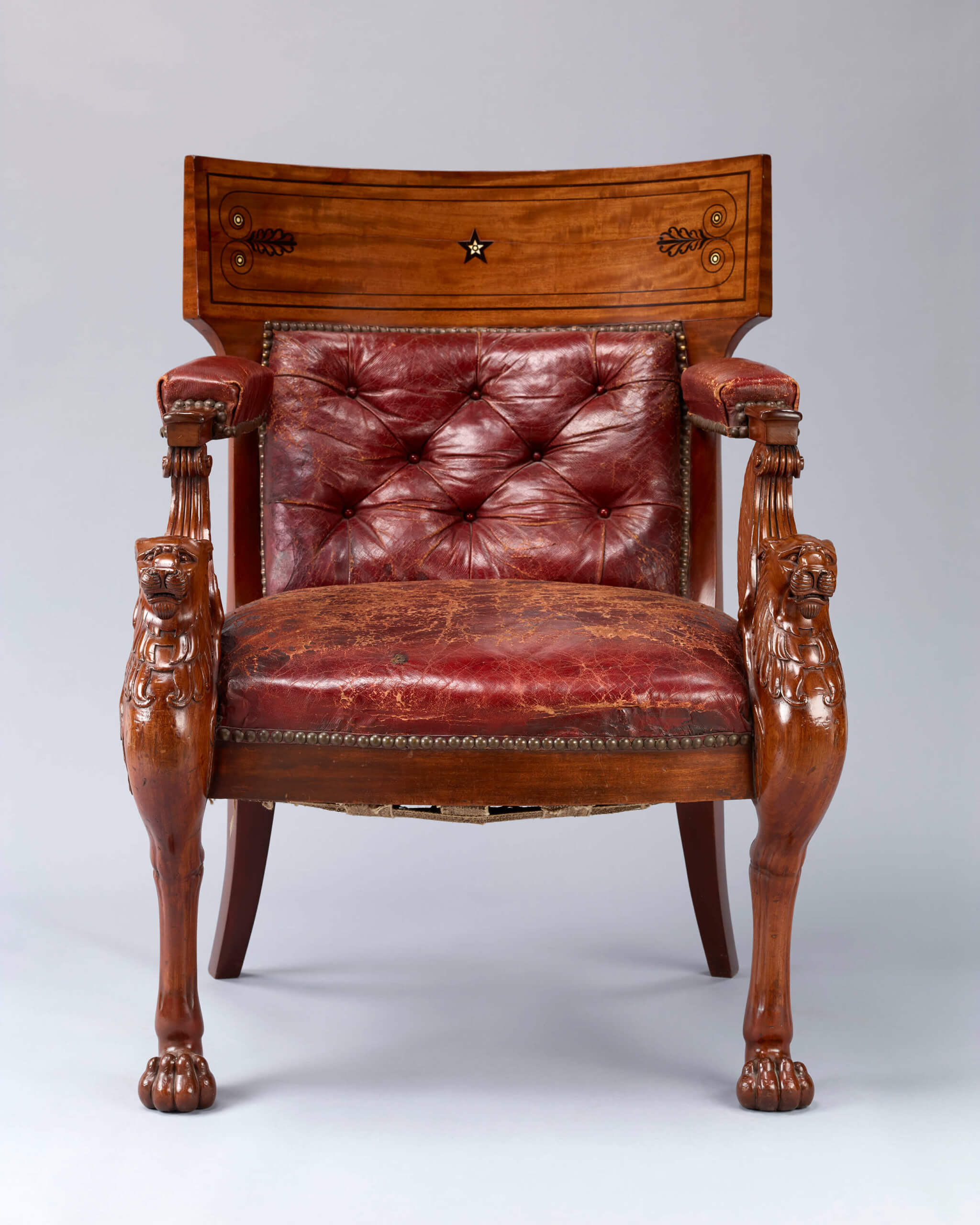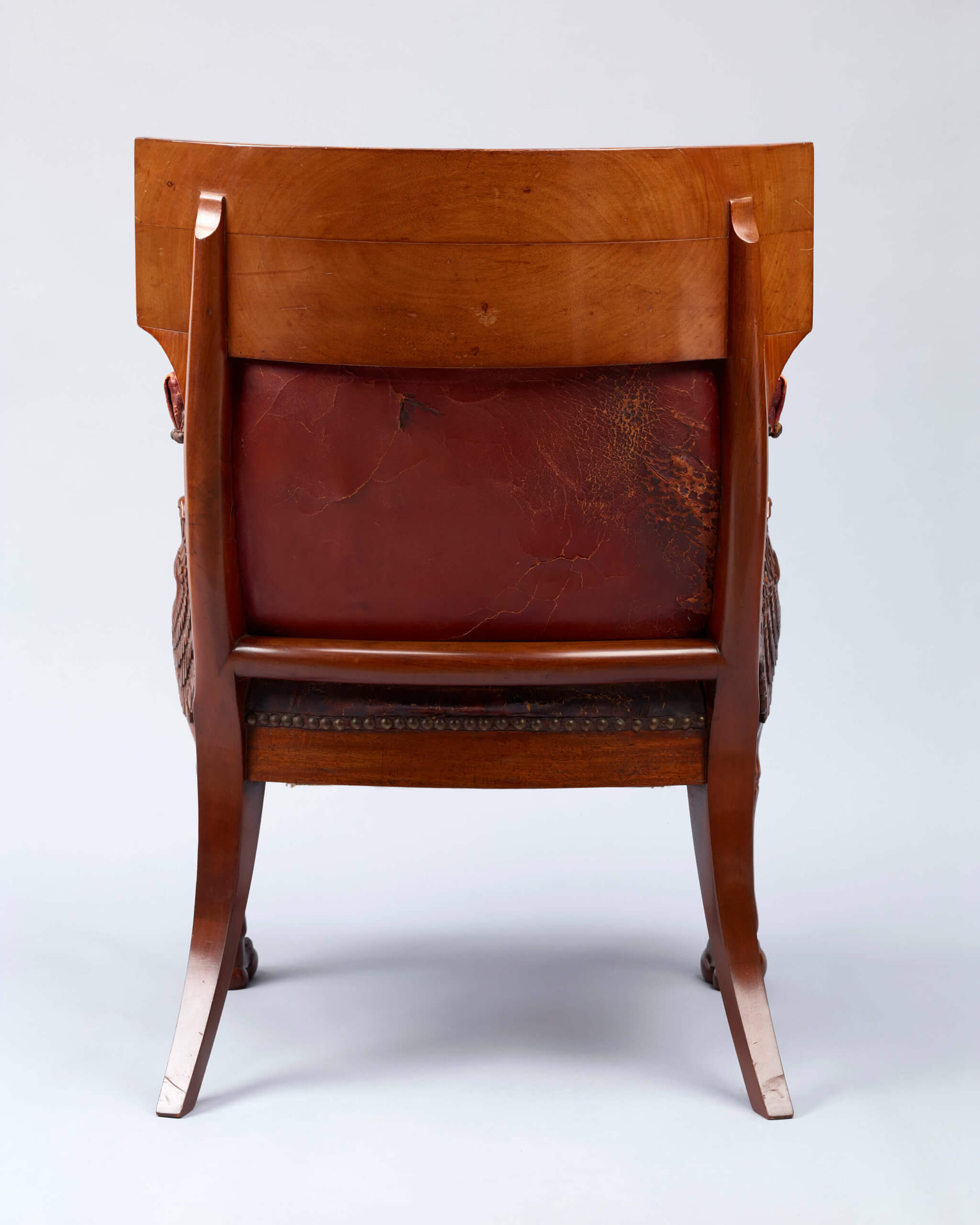

Carved mahogany; ivory and ebony marquetry; red leather.
H. 96.5 cm. (38 in.); W. 71 cm. (28 in.); D. 76 cm. (30 in.).
MARKS AND INSCRIPTIONS: C B, stencilled letters visible on the reverse of the seat belt.
PROVENANCE: private collection.
The domain of seat design at the end of the 18th century was marked by a revival of forms, particularly of those inspired by the animal kingdom. The Directoire period saw a proliferation of lion’s hock legs, in the image of the particularly powerful and remarkably sculpted ones flanking our armchair.
Imposing and comfortable, this armchair model enjoyed great success and continued to be produced during the Directoire period by the Jacob brothers, sons of Georges. Numerous examples can be found today in private and public collections. One such piece, part of the château de Malmaison collection, was used by Bonaparte in his townhouse, on rue de la Victoire. A pair of those armchairs, stamped G. IACOB formed part of the collection of H.H. Prince Murat. This seat was also reproduced on several occasions in portraits. It is featured in the renowned full-length portrait of the composer François-Adrien Boïeldieu (1775-1834), executed circa 1800 by Louis-Léopold Boilly (1761-1845), and now in the Fine Arts museum of Rouen. An armchair of this type can also be seen in a portrait of Eugène, painter Isabey’s son, which was presented in the 1810 Salon by Louis-André-Gabriel Bouchet (1759-1842).
The Jacobs are one of the most famous of the Parisian cabinet-making families, who, for over three generations, from the last third of the 18th century until the end of the first half of the 19th century, succeeded in keeping the reputation of their firm at the highest standard. Georges Jacob, the father of the dynasty, was awarded the title of master in 1765. From 1773 until the Revolution, Georges Jacob kept working for the Garde-Meuble to the Crown, supplying the main royal residences. From 1781, he held various positions in his guild of cabinetmakers. In 1788, he became head-assistant and was elected head of the guild on the following year. Under the First Empire, Jacob-Desmalter became a joiner, cabinetmaker and manufacturer of furniture and bronzes for L.L.M.M.I.I. and R.R. (Their Imperial and Royal Majesties), the Emperor and Empress, also being King and Queen of Italy since 1805. During the entire reign of Napoleon I, he was the main supplier of the Mobilier Impérial, far outstripping all his contemporaries.






